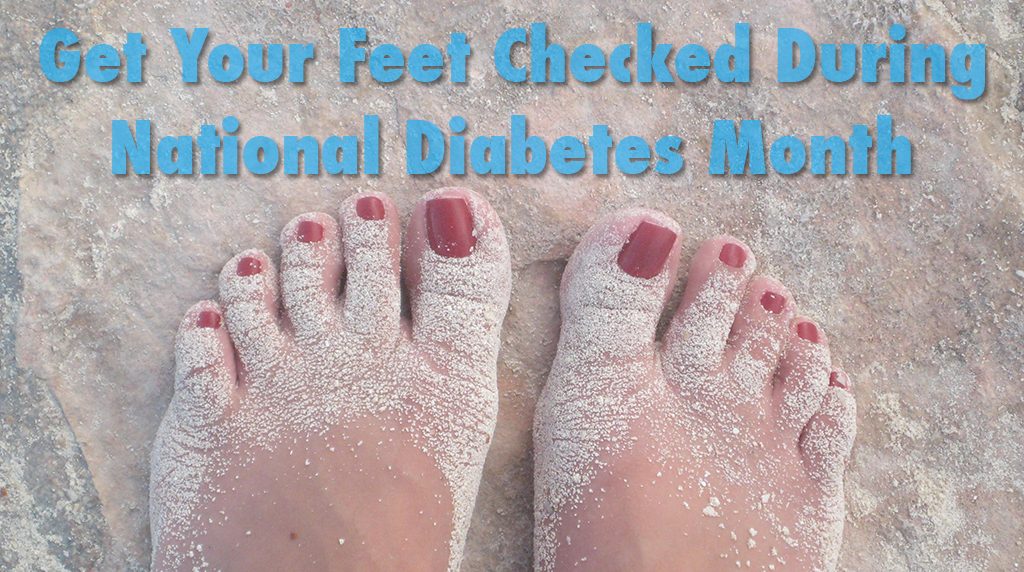
National Diabetes Month is observed every November to draw attention to diabetes and its effects on millions of Americans.
National Diabetes Month was initially established 40 years ago in 1975, though Congress and the U.S. presidents didn’t start passing proclamations recognizing November as “diabetes month” until the mid-80s.
The American Diabetes Association trademarked “American Diabetes Month” in 1997.
Diabetes is a disease that leads to high levels of blood sugar (glucose). It happens when the body does not make any or enough insulin, or does not use insulin well. Diabetes can lead to serious health problems, but people with diabetes can take steps to manage the disease and lower the chance of health problems.
There are nearly 30 million children and adults in the United States living with diabetes, according to the American Diabetes Association.
Foot problems are one of the most common complications associated with diabetes and it’s important to check your feet daily for signs of damage in order to avoid future problems. In severe cases, poor foot care may lead to amputation of a foot or leg. In fact, even something as minimal as a blister or a sore could lead to an infection or a non-healing wound.
The two main problems caused by diabetes in association with your feet are diabetic neuropathy and peripheral vascular disease.
Diabetic neuropathy can occur in both Type 1 and Type 2 diabetes. In Type 1 diabetes, the body does not produce the insulin necessary to convert glucose into the energy that the body needs. Type 2 diabetes, which is far more common, occurs when the body is unable to use insulin properly.
It has been estimated that between 60 to 70 percent of diabetics will deal with some form of neuropathy in their lifetime, compared to only a 25 to 30 percent chance for non-diabetics.
If you have damaged nerves in your legs and feet, you might not feel heat, cold, or pain. This lack of feeling is called “sensory diabetic neuropathy.” If you do not feel a cut or sore on your foot because of neuropathy, the cut could get worse and become infected.
Unlike diabetic neuropathy, peripheral vascular disease affects the flow of blood to your feet rather than the nervous system. Without good blood flow, it takes longer for a sore or cut to heal. If you have an infection that will not heal because of poor blood flow, you are at an increased risk for developing ulcers or gangrene.
The Importance of Foot Checks
Regular foot checks are an increasingly essential part of diabetes management as nerve damage and reduced circulation caused by diabetes can lead to reduced awareness of pain (neuropathy) and slower healing of the foot, which increases the risk of infection and foot ulcers.
“Patients with diabetes have a decrease in sensation to their lower extremities,” said Dr. Ian S. Goldbaum, a podiatric physician and surgeon with over 30 years of experience. “Because of this, they can’t feel things that a person would normally feel.”
While there are many preventative measures that diabetics can be taken reduce the risk of a foot infection, Dr. Golbaum insists that his patients not only check their feet twice a day — once in the morning and again at night — but also moisturize their feet daily to combat dryness.
“Diabetics have a dryness, which can cause cracking on their feet,” said Dr. Goldbaum. “This cracking makes them more vulnerable to infections that can enter through those openings and cause problems.
“The moisturizing and massaging process increases circulation through movement and also supplies moisture that diabetes takes away from the skin. It really acts as a protective barrier for your skin.”
When examining your feet at home, look out for any general signs of damage that include:
– Cuts
– Grazes
– Sores
– Bruises
– Blisters
– Burns
The soles of the feet may be difficult to check, but it’s still important to check them every day. You may find it helps to set up a mirror to help check the soles of your feet.
Your own foot checks should be carried out in addition to the foot examinations you should receive at least once a year from your local podiatrist. At Delray Beach Podiatry, however, Dr. Goldbaum prefers to see his diabetic patients far more frequently.
“They’re going to see approximately every two months to take care of anything we need to do,” said Dr. Goldbaum.
If you have diabetes, you should see your podiatric physician at the first sign of pain or other problems with your legs, ankles, feet or toes, no matter how minor you may think they are.
—
Follow Delray Beach Podiatry on Twitter @Delray_Podiatry
The content on this website is for informational purposes only. Do not rely or act upon information from www.DelrayBeachPodiatry.com without seeking professional medical advice. If you live in South Florida and would like a consultation with Dr. Ian Goldbaum, a podiatric physician and surgeon with over 30 years of experience, please see our contact information below:
BOCA/DELRAY
16244 S. Military Delray Beach, FL 33445
561-499-0033
BOYNTON BEACH
8198 Jog Road #100, Boynton Beach, FL 33472
561-499-0033
One response